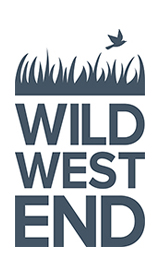Plants and Pollinators: A Research Study
Urban planting can support the establishment of green corridors and provide pollinator species with the necessary resources to move freely in an urban environment. Policies and reports indicate that planters with pollen rich species are successful in increasing food sources for pollinators (such as bees); however, to date there has been a rarity of published research on the topic.
Street-level planters are commonly installed on projects to provide visual amenity and to promote pollinators. Within the Wild West End project for instance, Shaftesbury has installed planters with a variety of pollen-rich species across their rooftops, in addition to the implementation of a one-year trial to multifunctional benefits of 100% pollinator friendly window boxes . The Howard de Walden Estate continues to promote pollinators through planning applications for wildflower roofs, in addition to plans for the installation of planters on Marylebone Lane and Wigmore Place.
Planters at Wigmore Place, Shaftesbury.
In 2020, Hannah Bonham (BSc Geography, University of Nottingham) conducted a research study to determine whether street planters are associated with higher abundances and richness’ of pollinators, and examine which planting variables (such as the availability of pollen and nectar, flower density and corolla (flower petal) shape) are significant in affecting pollinator visitation. Among the those surveyed, a sample of Wild West End’s green spaces were included.
The findings from the study highlighted a significantly higher average mean abundance and species richness at planter sites than at non-planter sites. This is exemplified by the presence of 239 individuals at planter sites compared to 39 individuals at non-planter sites. However, the results evidenced show that planters do not promote all types of pollinator species equally. Across all 300 sites sampled, honey bees were the most abundant, accounting for almost half of all observed pollinators; followed by wasps (23.3%), hoverflies (15.7%), and bumblebees, butterflies, damselflies and beetles (together at 11.3%).
The importance of planting variables, rather than patch size, is also integral to pollinator visitation. The study indicated the availability of pollen and nectar, higher flower density, and an open corolla (flower petal) shape as favourable factors for pollinators. Notably, the correlation between the variables and pollinator varies between plant species, and future research should focus on the abilities of individual plant species in promoting pollinators.
Promoting higher flower density, the Howard de Walden Estate recently received consent for two new areas of green roof on an existing office building in Beaumont Mews. The wild flower roof will host 34 varieties of species, with growing heights between 40-60cm. An application has also been submitted for one of the Estate’s offices in Bentinck St to develop a green roof with wild flower mix.
Green roof in Beaumont Mews, The Howard de Walden Estate,
To support biodiversity and environmental net-gain, approaches should continue to shift away from planting based solely on aesthetics to planting that provides a good food source for pollinators throughout the seasons as well as year-round interest and enjoyment for people. This will not only benefit pollinators but will also contribute to the overall resilience of cities.
Estate:
Shaftesbury
The Howard de Walden Estate
Features:
Green Roofs
Planters
Pollinator-friendly window boxes
.



